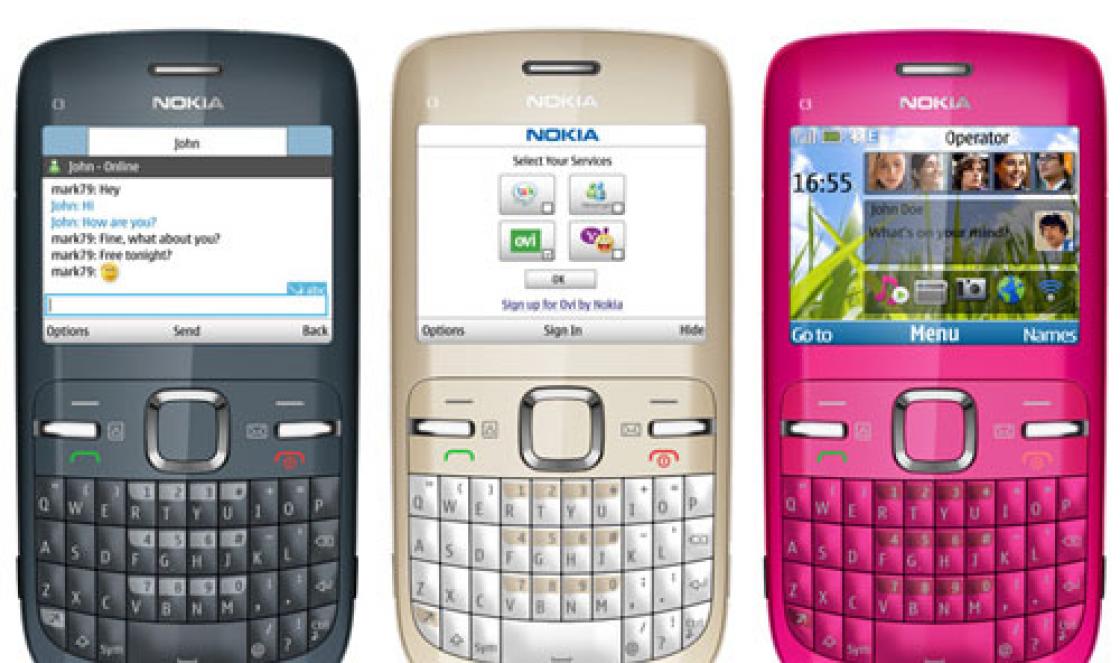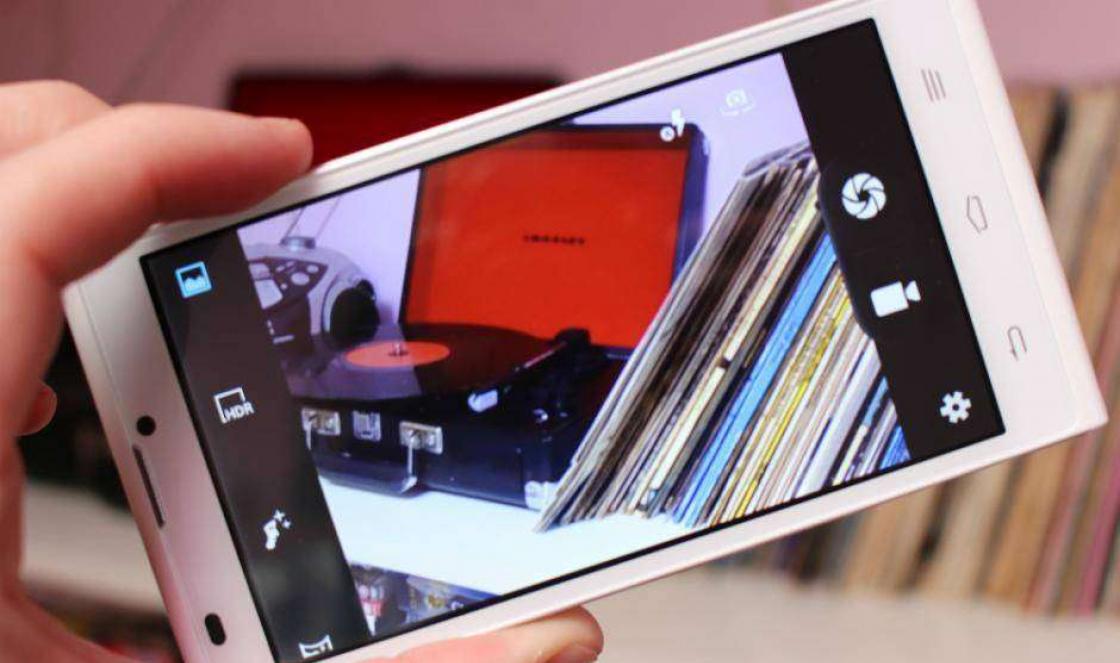Articles and Lifehacks
As you know, any modern phone equipped with communicator functions has such an unpleasant property as freezing during operation.
And the iPhone, unfortunately, is no exception, so a huge number of “happy” owners of this gadget “travel” through forums in the hope of finding an answer to the question of what to do if the iPhone is malfunctioning. Let's try to figure it out.
Problems due to some application
- If the iPhone is frozen due to the operation of some application, then you need to press the lock button, which is usually located in the upper part of the case, and hold it until two words appear on the phone screen: “turn off” and "cancel".
- After they appear, release the lock button and press the “Home” button located at the bottom of the screen.
- Clicking this button should close the frozen application.
How to reboot a frozen iPhone

As it turned out, doing a forced reboot on an iPhone is not as simple as it seems at first glance, because few people would guess that to do this you need to press and hold two buttons (“Home” and “Power”) at the same time.
The buttons must be held until the gadget's screen goes dark (or the world-famous apple appears on it, which will indicate that the gadget has started to reboot). After this, the gadget should start working normally.
Ways to solve the problem
Of course, the device can malfunction for various reasons, but most often it does this due to some kind of software glitch. And this problem can be solved by flashing (restoring) the device.To do this you will need to do the following:
- connect your phone to iTunes;
- open home page device management;
- and press the “restore” button on the top plate.
After such a procedure, the phone should stop glitching, otherwise, it is recommended to send it in for repair.
In mid-December, a Reddit user under the nickname TeckFire noticed that when the battery wear on his iPhone 6s reached 20%, the smartphone began to work much more slowly. Back then, few people took the news seriously—you never know what the geek “felt”... But December 21, 2017 Apple of the Year sent the well-known IT resource TechCrunch... a letter admitting that she deliberately makes the 2012-2016 iPhones slower!
Why do older iPhones start to slow down?
Apple writes that it is forced to artificially lower clock frequency chips in older devices like the iPhone 5s, 6, 6s and 7. Why? The fact is that due to increased load, the processors of these smartphones periodically reach their maximum capacity and consume too much energy. This leads to spontaneous shutdown of the device and other problems with the gadget. If you leave everything as it is, Apple notes, this iPhone will last less, and the battery replacement time will come sooner:
“Our goal is to offer users the best possible experience, which includes overall performance and extending the operating time of their devices. Lithium-ion batteries cope less well with peak loads in the cold season, when the charge level is low or due to natural wear and tear, which, in turn, leads to forced shutdown of the device in order to protect electronic components.
Last year, we released a feature for iPhone 6, iPhone 6s, and iPhone SE to smooth out sudden outputs. peak power- exclusively for those cases when it is necessary to protect the device from unexpected power outages under the conditions described above. We have now added this feature to iPhone 7 running iOS 11.2, and we plan to add support for other products in the future.”

The feature Apple is talking about was added to iOS version 10.2.1. Then iPhone 6s users began to complain en masse about spontaneous shutdowns of their devices, and engineers from Cupertino found only two solutions: depending on the request for energy consumption, either limit the energy consumption of the chip, or divide the request into several cycles.
What should you do to avoid Apple throttling? Just replace the battery! User @sam_siruomu on his Twitter page reports that: the processor of his new iPhone 6 3 years ago worked with a clock frequency of 1400 MHz, while now the heart of the smartphone produces only 600 MHz. Replacing the battery restored the processor clock speed to its previous level, and now the old iPhone 6 runs much faster even on the latest versions of iOS.
So it’s true Apple intentionally slow down old iPhones. Proof: My iPhone 6 was bought 3 years ago and recently got really slow. APP ‘CPU DasherX’ shows iPhone CPU is under clocked running at 600MHz. After a iPhone battery replacement. CPU speed resumed to factory setting 1400MHz. pic.twitter.com/pML3y0Jkp2
iPhone owners often complain about problems that arise after installing a new one. software. Updates iOS systems were no exception to the rule. After installing the update, users noticed that the iPhone was incredibly slow. What is the reason and how to achieve stable operation of the system?
iPhone slows down on iOS 11/iOS 12
Numerous reviews on the Internet from iPhone users report one global problem, which many have encountered - After iOS update iOS 11/12, iPhone slows down and even glitches. This manifests itself as follows: the system is very slow, the device takes longer to launch applications or switch between them, response times have increased significantly, system animations run with a delay. In a word, iOS 10.3 is incredibly slow, which is very annoying and interferes with normal interaction with the smartphone.
After updating the iOS system, the iPhone slows down: what to do?
There are several ways to solve this problem. The first one is the most loyal. Just wait a while for operating system created a cache and optimized the operation of applications. It is possible that the iPhone will stop glitching and overheating.
The second method involves changing some system settings: For example, turn off visual effects and transparency in accessibility settings, turn on motion reduction, turn off background content refresh, delete junk on your device. After all these steps, the speed and performance of the system should increase.
If none of the methods solved the problem and the iPhone is still slow after updating the iOS system, use the program to enter/exit recovery mode.
iOS 11/iOS 12 slows down on iPhone
Tenorshare ReiBoot is an excellent solution for problems such as black/blue screen, iPhone stuck on the apple logo, display not responding to touch, device rebooting cyclically, etc. Including the utility will become ideal solution in case the system started to slow down after updating the iOS. The problem is solved in just a few clicks:
1. Download Tenorshare ReiBoot from the official website on Mac or Windows. Install it. Connect your iPhone on board to your computer (or Mac) using a USB cable.
2. Launch the program. You will see several buttons, but only one will be active - “Enter recovery mode.” Click on it and wait for a while. You will see the iTunes logo on your iPhone display.

Is your iPhone or iPad glitching, is your iPhone or iPad slow, is your iPhone or iPad freezing? We have collected 13 tips on how to fix these problems!
There are mixed reviews from users that iOS update has slowed down some iPhone and iPad devices, or that tasks such as opening and interacting with apps are slower after installing new iOS. If your iPhone or iPad starts to slow down, glitches and freezes after installing iOS, then our tips on how to speed up your iPhone and iPad will help you.
By the way, many of the tips that help speed up your device and get rid of freezes and glitches can also have a positive effect on battery life, so if you're having trouble with the life of your iPhone or iPad, you can also use these tips.
Here we will look at many tips that can help speed up your device. Apart from the first two tips regarding installing software updates, you can skip them if you have already updated your device.
1: Install all iOS and app software updates
To update your iPhone or iPad to new version iOS (such as iOS 11.0.2, iOS 11.1, etc.).
- Open the Settings app, go to General > Software Update and select Download and install any update on iOS
To receive application updates:
- Open the application " App Store" and go to the "Updates" tab and install all available application updates.
2: Does the iPhone, iPad glitch, and does the iPhone or iPad slow down after the update?
If you just updated your iPhone or iPad to latest version iOS, and the device still slows down, lags and freezes? You can wait while your iOS device re-indexes everything: Spotlight, Siri, Photos and other background tasks. This may cause your device to run slowly due to increased background activity.
It's best to wait a few days, leave the device plugged in, and let it perform all system background tasks. After a night or two, the phone will usually behave normally again and performance will improve, and this will often also fix the fast battery drain issues.
3: Turn off background iOS updates
Background Refresh allows applications to be updated in background. This is good for multitasking and performance, but it can also slow down system performance. Disabling this is easy and most users won't notice a difference.
- Open Settings and go to General > Background App Refresh > OFF
iPhone, iPad glitches and iPhone, iPad slows down
4: Disable Siri App & Siri Look Up
You can often speed up the speed of your device, as well as the speed of the Notifications screen, by turning off Siri features Suggestions and Siri Lookup.
- Open Settings and go to Siri & Search, Search Suggestions to OFF, and Look Up Suggestions to OFF.
5: Force reboot your device
Sometimes forced reboot devices can help increase productivity, especially if some strange process is running in the background, or some application is heavily loading the device and your iPhone or iPad is slowing down because of this.
For most iPhones and iPads, hold down the POWER and HOME BUTTON simultaneously until you see the Apple logo appear on the screen.
To reboot new iPhone X, 8, 7 Quickly press and release the Volume Up button. Then do the same for the volume down button. Finally, hold the Side button for about 10 seconds until the screen turns black and hold it until you see the Apple logo.
Here's an example of the iPhone 8, which uses the same buttons to force a reboot:
Then just wait for the device to boot again.
6: Use Simple Wallpaper
Usage simple wallpaper created from a small image size can sometimes speed things up. The idea behind using a simple wallpaper is that it requires less memory and system resources, which can help speed up your home screen iOS devices.
- Open Settings and go to Wallpaper > Wallpaper > Choose a boring wallpaper that has one color or a very small file size.
The iPhone and iPad are glitchy, and the iPhone and iPad are slow.
The home screen may look a little more boring when the image is simple background image(or not, depending on your taste), but it can also speed up your device a bit. Try it out, you can use the simple tiny gray wallpaper below if you like, or find your own.
7: Disable Parallax Interface Effects and Reduce Motion
iOS uses various visual effects that look stunning but require more system resources to draw and render. Disabling these visual effects user interface system may improve performance, or at least improve performance, by disabling animation.
- Open Settings and go to General > Accessibility > Reduce Motion and turn it on.
The iPhone and iPad are glitchy, and the iPhone and iPad are slow.
*In the Reduce Motion settings, you can also turn off Message Effects for Autoplay, as those animations in the Messages app can also feel a little sluggish at times.
When you turn on Reduce Motion, the effect of opening and closing metering and zooming apps is replaced with a simple, subtle fading animation.
8: Reducing iOS System Transparency
Transparency and blur effects are scattered throughout iOS, from the dock, to the control center, to the notification panels, etc. They look beautiful, but these blur effects can use system resources and sometimes glitch or slow down the iPhone. Disabling them may help the device improve performance:
- Open Settings and go to General > Accessibility > Increase Contrast > Reduce Transparency to ON.
Using the Increase Contrast option may seem a little confusing, but the result is that Control Center should work faster.
","type":"inline","skip_delay":"8","time":"0.5"),("source":"","type":"inline","skip_delay":"8" ,"time":"0.99")]">
How to extend time battery life iOS on iPhone and iPad
","type":"inline","skip_delay":"8","time":"0.5"),("source":"","type":"inline","skip_delay":"8" ,"time":"0.99")]">
Lesson #30. iPhone Power Saving Mode
","type":"inline","skip_delay":"8","time":"0.5"),("source":"","type":"inline","skip_delay":"8" ,"time":"0.99")]">
How to extend iPhone battery life
","type":"inline","skip_delay":"8","time":"0.5"),("source":"","type":"inline","skip_delay":"8" ,"time":"0.99")]">
iPhone runs out of battery quickly. What to do?
","type":"inline","skip_delay":"8","time":"0.5"),("source":"","type":"inline","skip_delay":"8" ,"time":"0.99")]">
10 ways to get rid of fast iPhone drain
9: Location and background settings on iPhone and iPad
One thing I do from time to time, no matter what device or version of iOS I'm using, is adjust which apps have access to my location and update in the background. If you have a lot of apps installed and they are constantly updating in the background, this can cause things to slow down. And battery discharge.
You can change which apps have access to background app updates by following these steps:
Background app refresh allows apps to run in the background even when you're not using them. Disabling it could potentially speed up your iPhone.
- Run application« Settings" and click " General».
- Select " Background app update».
- You can disable the feature completely or individually choose which apps can update data in the background.
You can configure which apps can use your location and when by following these steps:
- Run application« Settings" and tap " Confidentiality».
- Select " Location Services».
- Now choose which apps can access your location.
The iPhone and iPad are glitchy, and the iPhone and iPad are slow.
Apps that constantly check your location can cause your iPhone to slow down. That's why it's important to monitor how often apps access your location.
I recommend allowing most applications. This means you can get weather information for your location, get updated transit through Maps without entering locations, etc. At the same time, it will prevent those apps from using up extra performance in the background without your knowledge.
10: Free up enough storage space on your iPhone or iPad
Having sufficient free space is ideal for optimal iPad operation or iPhone. Generally speaking, it's a good idea to have 10% or more free space. Therefore, if you have a device with a capacity of 32 GB, it is advisable to have 3 GB of free space or more. This means that there is enough free space for caches, updating applications and iOS itself, and performing other system functions.
- Open Settings and go to General > then select Storage (now labeled iPhone or iPad storage). Make sure there is enough space; if not, free it up.
The iPhone and iPad are glitchy, and the iPhone and iPad are slow.
Once you're in the Manage Storage section of your device, you can either follow the recommendation to free up storage space, delete unused or old apps, or take other steps needed to free up storage on your iPhone or iPad.
This is important, and if your iPhone or iPad is completely full or has very little space, performance will suffer, plus you won't be able to install updates to apps or system software, and other problems may arise, such as: data mysteriously deleted from the device, not music is saved. Always try to have accessible storage space.
11: Reset iOS system settings
If none of the methods listed above solved the problem: the iPhone or iPad is slow, the iPhone or iPad is glitchy, the iPhone or iPad is frozen, then do a reset.
Resetting your iOS device may speed things up for some users. Keep in mind that if you reset your device, you will need to make changes to all of your user settings again, like many of the ones described earlier in this article.
- Open Settings and go to General > Reset > Reset All Settings.
The iPhone and iPad are glitchy, and the iPhone and iPad are slow.
12: iOS Backup and Restore
A common troubleshooting method is backup device in iTunes or iCloud, and then restore iOS. This can sometimes clear up strange performance issues, and if you contact Apple to troubleshoot your device, they will likely want you to perform this action.
You can back up to iTunes or iCloud or both. Always perform a backup before starting the restore process.
Using iTunes with your device connected to your computer, you will then select "Restore" the device. Or you can select "Recover" directly on the device itself and select iCloud or iTunes to restore.
13: Recover using iTunes, not iCloud
iCloud updates are convenient, but they're slow. And sometimes broken pieces of data can be carried over from update to update. I've definitely had better recoveries since using iTunes. Because iTunes extracts and decompresses files on your computer, unlike your iPhone or iPad, you get clean version iOS.
You can restore your device using reboot, an application that makes it easy to restore your iPhone or iPad. Download
The screen does not respond to your touches, the touchscreen becomes dull and freezes: remember if the phone fell into lately? This may be the reason for the poorly functioning sensor on the iPhone 6, 6s.
In addition to the fall, the performance of the touchscreen is affected by:
- screen replacement;
- software update;
- moisture getting inside the device;
- screen dirty.
Experts believe that you should contact a service center if:
- the sensor responds, but with a delay;
- The phone’s “reaction” is missing in some places on the screen;
- The touchscreen doesn't work at all;
- The device lives its own life: it opens and closes applications on its own, types text, and turns off.
Important! If the gadget does not respond completely to touch, then there is a possibility of breakdown motherboard. It is necessary to urgently contact specialists.
What not to do and how to solve the problem yourself
To save money cash, advanced users, want to fix gadget problems themselves. When trying to “reanimate” the touchscreen, you should not follow “harmful” advice:
- Dry your iPhone with a hairdryer if it falls into water;
- without outside help, glue or replace the screen if it comes off;
- disassemble and assemble the “mobile phone”;
This will increase the cost of repairs, but will not save the situation.
3 ways that you can take without being a specialist in the field of electrical repairs:
- Perform a full reboot of the device (Press 2 buttons simultaneously for 20 seconds: power and home);
- put away safety glass or film. They may be the reason why the sensor does not work on iPhone 6, 6s plus;
- Wipe the display from dust and dirt.
Important! Do not try to replace the screen on your iPhone yourself, because if you damage important parts, the repair will cost more. Only an experienced craftsman can perform such work. Our service center offersaffordable prices in St. Petersburg for replacing iPhone 6 glass.
Qualified help
Did you fail to “reanimate” the sensor? Seek help from professionals to obtain free consultation by phone. If the breakdown is not serious, the technician will help restore the device’s functionality remotely.
In case of a serious problem, the service center will diagnose the phone to understand the cause of the breakdown and replace the failed part.
iPhone 6, 6s repairs in St. Petersburg are carried out with a guarantee. Only original spare parts and professional equipment are used in the work.
Our specialists service center We are always ready to quickly and efficiently replace the screen unit on an iPhone 6 at affordable prices in St. Petersburg, as well as carry out free diagnostics of other problems.













